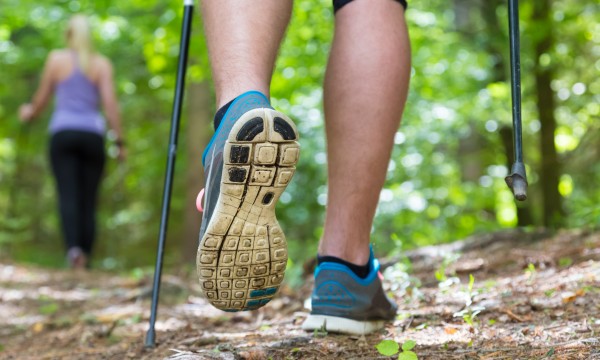Get the most benefits for your heart health by incorporating these walking tips into your exercise plan.
- Browse Categories
- All Tips
-
Home & Garden
- All
- Appliances
- Bathroom
- Cleaning
- Crafts
- Decorating
- Electrical
- Flooring
- Furniture
- Garage Door
- Gardening
- Green Living
- Heating
- Home Alarm Systems
- Home Maintenance
- Home Remedies
- Home Security
- Home Staging
- House Sitting
- Junk Removal
- Kitchen
- Lawn Care
- Lock Systems
- Moving
- Outdoor Living
- Pest Control
- Plumbing
- Renovation
- Roofing
- Snow Removal
- Storage
- Tools
- Tree Service
- Health
- Family
- Travel
- Auto
- More Tips

How to walk your way to your healthiest heart ever
November 14, 2014

Is running or walking better for heart health? It turns out that walking carries less risk for common injuries like wear-and-tear on the joints than running, while still delivering heart-strengthening benefits. If you have heart-health issues, are significantly overweight or have been physically inactive for a while, walking can help you find your way back to health.
Walk the right way
If you know the proper form, you can walk for hours without stressing your body, while increasing your endurance and cardiovascular health. Besides advice to wear a comfortable pair of walking shoes, the Mayo Clinic recommends you:
- Keep good posture. Imagine you have dots connected in a straight line from your shoulders down to your hips and ankles. Maintain that straight line and look ahead with chin kept parallel to the floor.
- Tighten stomach muscles. Your core muscles are the strongest part of your body. When you engage them, you stabilize your spine, become balanced (aligned) and move in the proper form.
- Walk with a purposeful gait, keeping your shoulders relaxed and arms swinging freely. When walking, roll your feet from heel to toe for smooth, low impact strides.
Pace yourself, then build up to a brisk walk
According to the Heart and Stroke Foundation, 30 minutes of daily walking cuts your chances of heart disease and stroke. To get the maximum heart benefit, a brisk (or moderate) pace is recommended. Start by strolling purposefully and gradually build to a brisk pace, as if you were a few minutes late for an appointment.
Track your progress
Besides having a walking partner to urge you on, tracking your progress is the next best exercise motivator. A pedometer comes highly recommended by many heart-healthy institutions. The device is designed to keep you focused on your goals, allowing you to adjust your routine where it is necessary.
Challenge yourself
Like any other muscle, your heart is made stronger through resistance training. In this case, challenging yourself with obstacle courses such as an incline or hill walk will help build your heart muscle. Alternatively, choose ankles weights or free-weights when an incline is not accessible on your walking trail. Working out your heart with a more challenging walk will help you keep it healthy.






